Matthew Leigh
Enhancing generalization in high energy physics using white-box adversarial attacks
Nov 14, 2024Abstract:Machine learning is becoming increasingly popular in the context of particle physics. Supervised learning, which uses labeled Monte Carlo (MC) simulations, remains one of the most widely used methods for discriminating signals beyond the Standard Model. However, this paper suggests that supervised models may depend excessively on artifacts and approximations from Monte Carlo simulations, potentially limiting their ability to generalize well to real data. This study aims to enhance the generalization properties of supervised models by reducing the sharpness of local minima. It reviews the application of four distinct white-box adversarial attacks in the context of classifying Higgs boson decay signals. The attacks are divided into weight space attacks, and feature space attacks. To study and quantify the sharpness of different local minima this paper presents two analysis methods: gradient ascent and reduced Hessian eigenvalue analysis. The results show that white-box adversarial attacks significantly improve generalization performance, albeit with increased computational complexity.
PIPPIN: Generating variable length full events from partons
Jun 18, 2024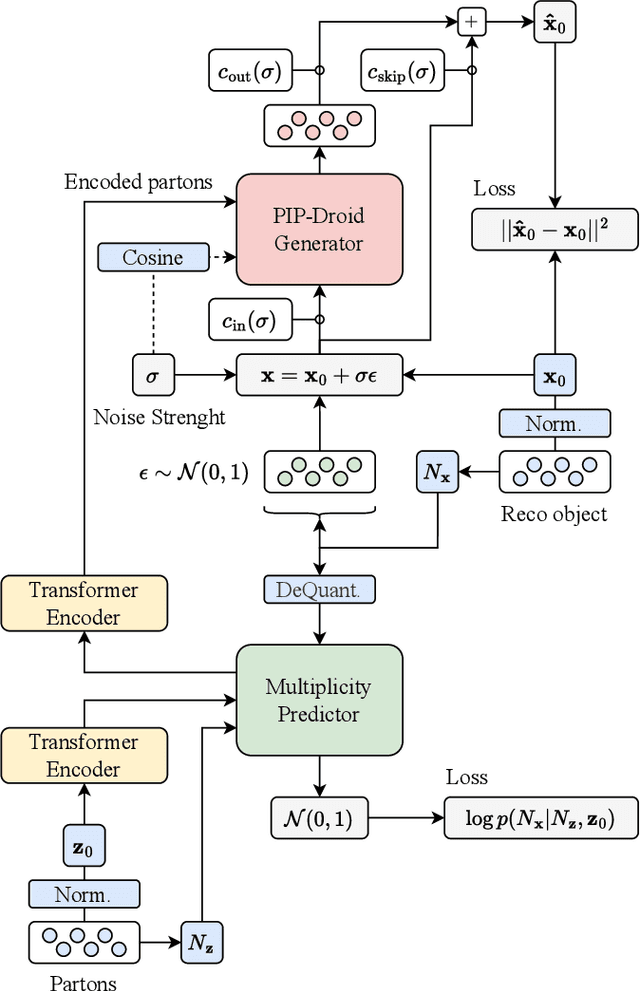
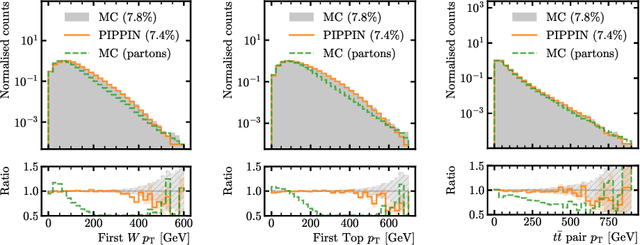
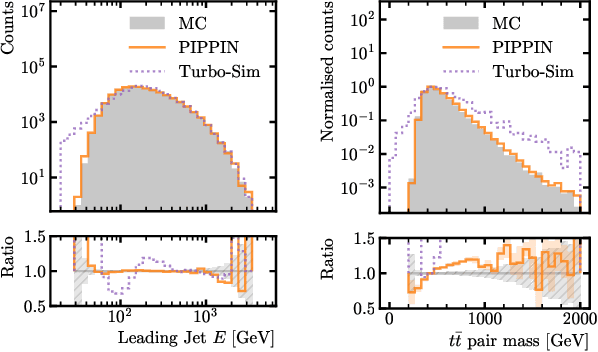
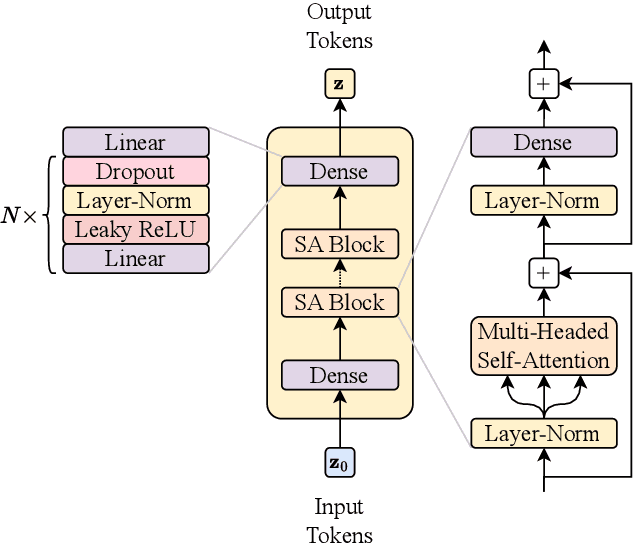
Abstract:This paper presents a novel approach for directly generating full events at detector-level from parton-level information, leveraging cutting-edge machine learning techniques. To address the challenge of multiplicity variations between parton and reconstructed object spaces, we employ transformers, score-based models and normalizing flows. Our method tackles the inherent complexities of the stochastic transition between these two spaces and achieves remarkably accurate results. The combination of innovative techniques and the achieved accuracy demonstrates the potential of our approach in advancing the field and opens avenues for further exploration. This research contributes to the ongoing efforts in high-energy physics and generative modelling, providing a promising direction for enhanced precision in fast detector simulation.
Masked Particle Modeling on Sets: Towards Self-Supervised High Energy Physics Foundation Models
Jan 25, 2024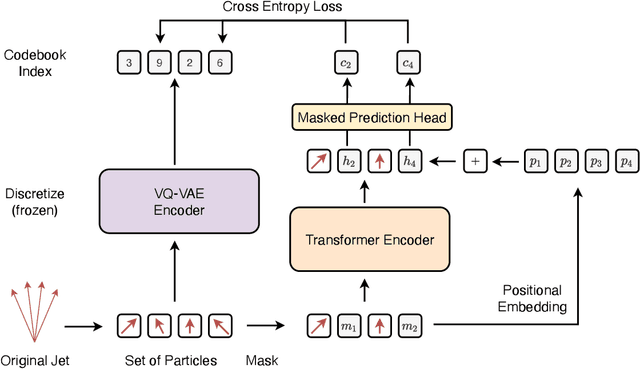
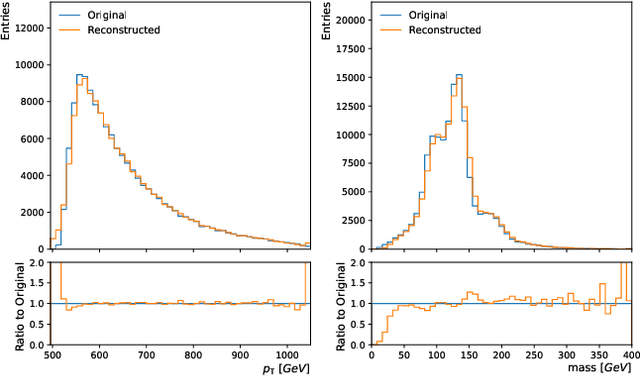
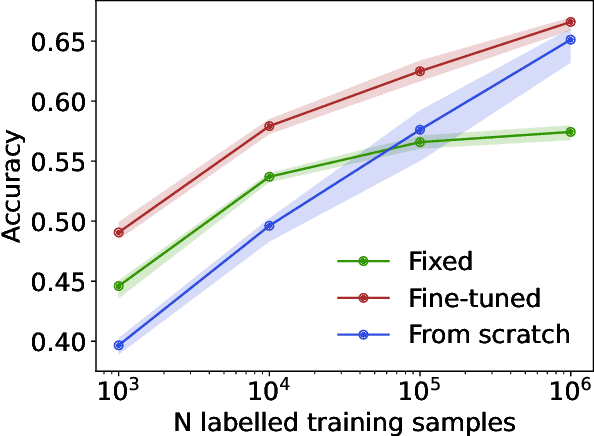
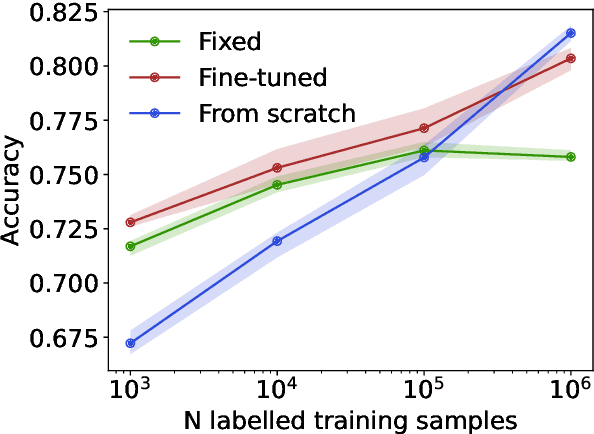
Abstract:We propose masked particle modeling (MPM) as a self-supervised method for learning generic, transferable, and reusable representations on unordered sets of inputs for use in high energy physics (HEP) scientific data. This work provides a novel scheme to perform masked modeling based pre-training to learn permutation invariant functions on sets. More generally, this work provides a step towards building large foundation models for HEP that can be generically pre-trained with self-supervised learning and later fine-tuned for a variety of down-stream tasks. In MPM, particles in a set are masked and the training objective is to recover their identity, as defined by a discretized token representation of a pre-trained vector quantized variational autoencoder. We study the efficacy of the method in samples of high energy jets at collider physics experiments, including studies on the impact of discretization, permutation invariance, and ordering. We also study the fine-tuning capability of the model, showing that it can be adapted to tasks such as supervised and weakly supervised jet classification, and that the model can transfer efficiently with small fine-tuning data sets to new classes and new data domains.
Improving new physics searches with diffusion models for event observables and jet constituents
Dec 19, 2023Abstract:We introduce a new technique called Drapes to enhance the sensitivity in searches for new physics at the LHC. By training diffusion models on side-band data, we show how background templates for the signal region can be generated either directly from noise, or by partially applying the diffusion process to existing data. In the partial diffusion case, data can be drawn from side-band regions, with the inverse diffusion performed for new target conditional values, or from the signal region, preserving the distribution over the conditional property that defines the signal region. We apply this technique to the hunt for resonances using the LHCO di-jet dataset, and achieve state-of-the-art performance for background template generation using high level input features. We also show how Drapes can be applied to low level inputs with jet constituents, reducing the model dependence on the choice of input observables. Using jet constituents we can further improve sensitivity to the signal process, but observe a loss in performance where the signal significance before applying any selection is below 4$\sigma$.
EPiC-ly Fast Particle Cloud Generation with Flow-Matching and Diffusion
Sep 29, 2023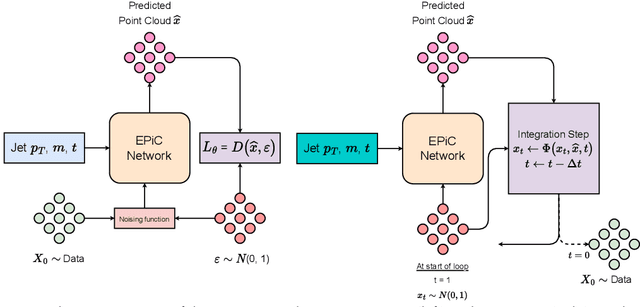
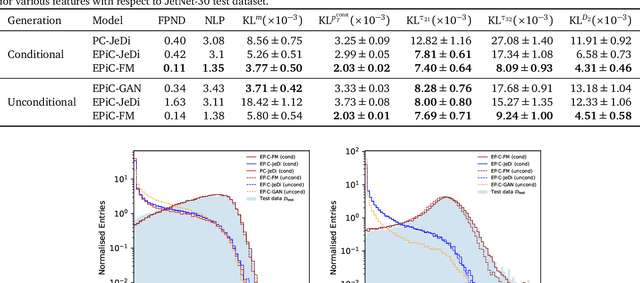
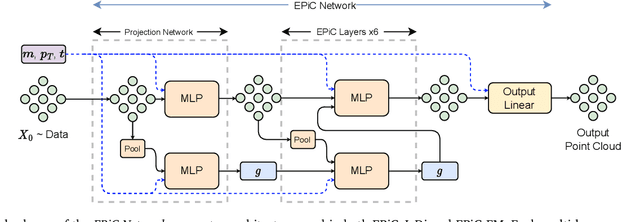

Abstract:Jets at the LHC, typically consisting of a large number of highly correlated particles, are a fascinating laboratory for deep generative modeling. In this paper, we present two novel methods that generate LHC jets as point clouds efficiently and accurately. We introduce \epcjedi, which combines score-matching diffusion models with the Equivariant Point Cloud (EPiC) architecture based on the deep sets framework. This model offers a much faster alternative to previous transformer-based diffusion models without reducing the quality of the generated jets. In addition, we introduce \epcfm, the first permutation equivariant continuous normalizing flow (CNF) for particle cloud generation. This model is trained with {\it flow-matching}, a scalable and easy-to-train objective based on optimal transport that directly regresses the vector fields connecting the Gaussian noise prior to the data distribution. Our experiments demonstrate that \epcjedi and \epcfm both achieve state-of-the-art performance on the top-quark JetNet datasets whilst maintaining fast generation speed. Most notably, we find that the \epcfm model consistently outperforms all the other generative models considered here across every metric. Finally, we also introduce two new particle cloud performance metrics: the first based on the Kullback-Leibler divergence between feature distributions, the second is the negative log-posterior of a multi-model ParticleNet classifier.
$ν^2$-Flows: Fast and improved neutrino reconstruction in multi-neutrino final states with conditional normalizing flows
Jul 20, 2023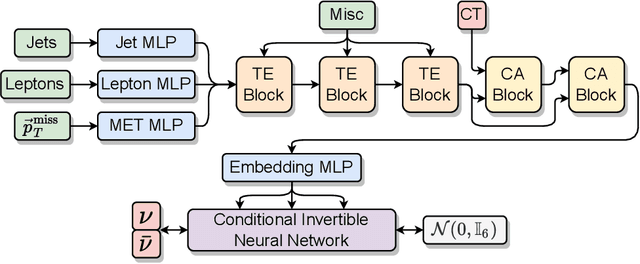
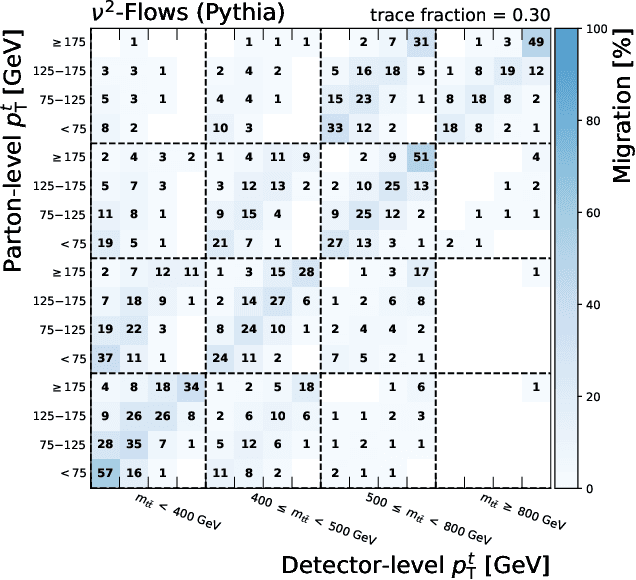
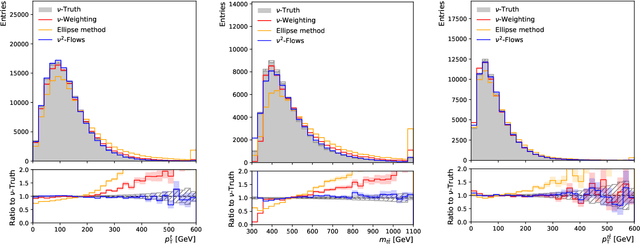
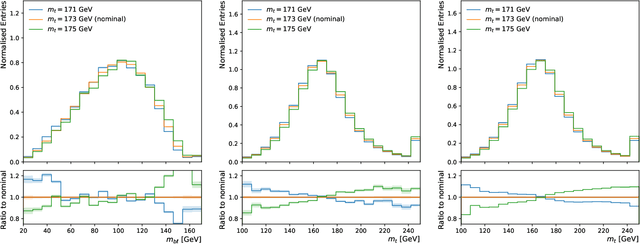
Abstract:In this work we introduce $\nu^2$-Flows, an extension of the $\nu$-Flows method to final states containing multiple neutrinos. The architecture can natively scale for all combinations of object types and multiplicities in the final state for any desired neutrino multiplicities. In $t\bar{t}$ dilepton events, the momenta of both neutrinos and correlations between them are reconstructed more accurately than when using the most popular standard analytical techniques, and solutions are found for all events. Inference time is significantly faster than competing methods, and can be reduced further by evaluating in parallel on graphics processing units. We apply $\nu^2$-Flows to $t\bar{t}$ dilepton events and show that the per-bin uncertainties in unfolded distributions is much closer to the limit of performance set by perfect neutrino reconstruction than standard techniques. For the chosen double differential observables $\nu^2$-Flows results in improved statistical precision for each bin by a factor of 1.5 to 2 in comparison to the Neutrino Weighting method and up to a factor of four in comparison to the Ellipse approach.
PC-Droid: Faster diffusion and improved quality for particle cloud generation
Jul 14, 2023Abstract:Building on the success of PC-JeDi we introduce PC-Droid, a substantially improved diffusion model for the generation of jet particle clouds. By leveraging a new diffusion formulation, studying more recent integration solvers, and training on all jet types simultaneously, we are able to achieve state-of-the-art performance for all types of jets across all evaluation metrics. We study the trade-off between generation speed and quality by comparing two attention based architectures, as well as the potential of consistency distillation to reduce the number of diffusion steps. Both the faster architecture and consistency models demonstrate performance surpassing many competing models, with generation time up to two orders of magnitude faster than PC-JeDi.
PC-JeDi: Diffusion for Particle Cloud Generation in High Energy Physics
Mar 09, 2023



Abstract:In this paper, we present a new method to efficiently generate jets in High Energy Physics called PC-JeDi. This method utilises score-based diffusion models in conjunction with transformers which are well suited to the task of generating jets as particle clouds due to their permutation equivariance. PC-JeDi achieves competitive performance with current state-of-the-art methods across several metrics that evaluate the quality of the generated jets. Although slower than other models, due to the large number of forward passes required by diffusion models, it is still substantially faster than traditional detailed simulation. Furthermore, PC-JeDi uses conditional generation to produce jets with a desired mass and transverse momentum for two different particles, top quarks and gluons.
 Add to Chrome
Add to Chrome Add to Firefox
Add to Firefox Add to Edge
Add to Edge